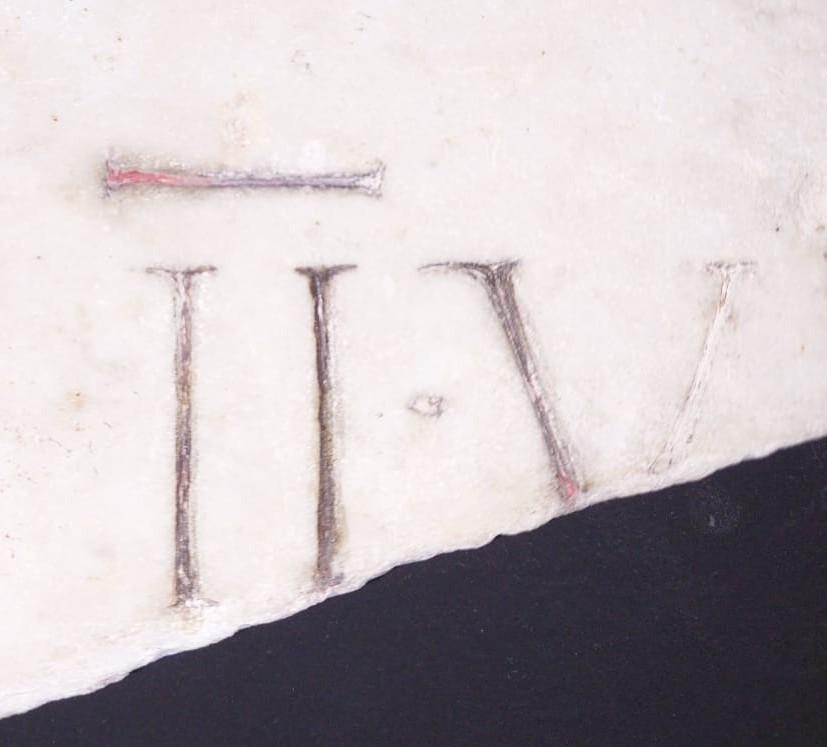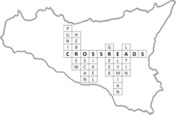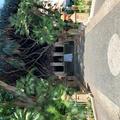Report on the Crossreads workshop no 3. The Petrography Workshop, Botanical Gardens, Catania, 5-6 June 2025

The archaeometrical study of stone inscriptions: interdisciplinary approaches for ancient Sicily.
The aim of this workshop was to bring together experts working in the adjacent fields of ancient history, archaeology, archaeometry, epigraphy, geology, museums and palaeography (as well as students and researchers in related fields), to start a fruitful discussion on the potential of the multi- and inter-disciplinary analysis of ancient texts, their materiality and materials, so as to achieve a deeper understanding of ancient Sicily, within the framework of the CROSSREADS ERC project (grant agreement No. 885040). Indeed, one of the ambitions of the project, somewhat hampered by Covid-19, has been to engage with the scientific personnel of local cultural heritage institutions (museums, archaeological parcs, soprintendenze), as well as with students working in Sicily, to further develop interdisciplinary approaches that are already well-established among academics working in the field of archaeometry.
Five sessions sought to explore the material features of archaeological stone materials in the ancient Mediterranean and in Sicily, their place within many different research fields, and the challenges of curating epigraphic collections in museums. Speakers were invited to share their experience in research fields relevant to the Crossreads project: archaeometry, archaeology, ancient history, ancient economics, ancient polychromy, applied geology, museology, palaeography.
The conference was preceded by an informal lunch, provided by Prestipino, at the botanical gardens, which was attended by ca. 45 conference participants; this acted both as an ice breaker and as a reunion, as the local archaeometry and museum communities have been already working together in Sicily for some time. However, the presence of national and international experts contributed to a deeper and wider understanding of Sicilian epigraphic practices, and sparked interesting conversations and a positive atmosphere overall.
A warm welcome to the participants was given by Prof. Gianpietro Giusso del Galdo, Director of the Botanical Gardens, which hosted the event; Prof. Rosolino Cirrincione, Director of the Department of Biological, Geological and Environmental Sciences, partner of the Crossreads project; Prof. Paolo Mazzoleni, Scientific supervisor of Petrographic sampling and analysis on the Crossreads project; Prof. Pietro Militello, Director of the Doctoral School, Scienze per il Patrimonio e la Produzione Culturale, of the University of Catania. The Head of Soprintendenza per i Beni Culturali e Ambientali di Catania, Dr Ida Buttitta, sent her greetings by email, as she could not attend the event.
The first session sought to provide a mixed audience with an overview of the stone materials available in ancient Sicily (imported marble, Hyblean calcarenites, polishable stones) and on the analytical techniques which are needed for their characterisation, with a case study exemplifying the successful application of archaeometry to archaeological materials within interdisciplinary projects.
Session 1: Geosciences at the service of archaeology: imported marbles and Sicilian rocks
- Fabrizio Antonelli (Università di Venezia, IUAV) - I marmi bianchi del Mediterraneo antico: breve storia d'uso e principali metodi di studio archeometrico
- Germana Barone (Università di Catania), Alessia Coccato (University of Oxford), Paolo Mazzoleni (Università di Catania) - La geologia della Sicilia e l'evidenza archeologica: primi dati dagli studi archeometrici
- Cristina Maria Belfiore (Università di Catania) - Le calcareniti degli Iblei nell’architettura della Sicilia sud-orientale dall’Antichità al Tardo Barocco
- Gabriella Tigano (Parco archeologico di Naxos Taormina), Maria Grazia Vanaria (Parco archeologico di Naxos Taormina) - Primi dati sulla caratterizzazione multianalitica di una selezione di campioni di calcareniti e di marmi dall’antica Tauromenion/Tauromenium
The second session allowed the audience to explore the contribution of archaeometrical studies to the study of ancient trade and economics, as well as on material choices for different purposes. The application of archaeometry to epigraphic materials from the Iberian peninsula allowed to summarize the first day and to set the tone for the following.
Session 2: Interdisciplinary research on stone: trade routes and the use of materials
- Laura Medeghini (Università di Roma Sapienza) et alii - Rotte lapidee nel Mediterraneo bizantino: il caso del relitto di Marzamemi
- Devi Taelman (Vrije Universiteit Brussel) - From archaeometry to Roman economic narratives: white marble provenance data and interpretive challenges
- Anna Gutiérrez Garcia-Moreno (Institut Català d'Arqueologia Clàssica), Diana Gorostidi (Institut Català d'Arqueologia Clàssica) - Pietre e parole: selected cases of archaeometry on epigraphy of Roman Hispania
18 speakers attended dinner at Putì, Via Sant'Euplio, 108, 95125 Catania CT, Italy.
The first session of the second day was dedicated to an additional topic concerning archaeometry of inscriptions, that concerns pigments. The first two presentations explored materials and analytical techniques in ancient polychromy, while the other two were dedicated to Sicilian funerary monuments and to ongoing research on Roman inscriptions from the United Kingdom and Germany and the reconstruction of their polychromy.
Session 3: Polychromy: from analytical data to interdisciplinary research and reception
- Maura Fugazzotto (Università di Catania), Maria Cristina Caggiani (Università di Catania) - La tavolozza di pigmenti nell’Antichitá: dati archeometrici e l’esempio del Blu Egizio
- Lucia Burgio (V&A Conservation Science Lab) - La pagina scritta: protocolli di analisi scientifica
- Gabriella Chirco (Soprintendenza Archeologia, Belle Arti e Paesaggio per la Citta' Metropolitana di Bari, formerly Università di Palermo), Elisa Portale (Università di Palermo), Francesca Delia Chillura Martino (Università di Palermo) - Colori, immagini e parole su stele ed edicole funerarie da Lilibeo
- Louisa Campbell (University of Glasgow) - Epigraphy and polychromy in practice: presenting Imperial inscriptions in the past and present
The next session focussed on the presentation of preliminary interdisciplinary discussions within the Crossreads project, following the inclusion of material aspects (rock provenance and type, pigments) into the epigraphic research, with presentations by the project PI, members and collaborators (former and present). The last presentation of the session introduced the ongoing epigraphic research within museums.
Session 4: Materiality and materials of ancient epigraphy: interdisciplinary research in Sicily
- Jonathan Prag (University of Oxford) - L’importanza della materialità in epigrafia
- Ilenia Gradante (Istituto Centrale per il Restauro, formerly a Research Associate on Crossreads, University of Oxford), Gioacchina Tiziana Ricciardi (Pontificia Commissione di Archeologia Sacra) - Materialità e cultura visuale nella produzione epigrafica Cristiana dalle catacombe di Siracusa
- Simona Stoyanova ( RA, Crossreads, University of Oxford) - Production and style of inscriptions of Termini Imerese: a palaeographic approach
- Valentina Mignosa (formerly a PDRA on Crossreads, now at the Università di Venezia Ca’ Foscari) - Testo, supporto, contesto: rileggere l’iscrizione ‘del Mendolito’ tra epigrafia e petrografia
- Francesca Prado (Università di Catania) - Centuripe in età imperiale, tra facoltose élites committenti e testimonianze epigrafiche
- Caterina Greco (Museo Archeologico Regionale “A. Salinas” di Palermo) - Statua di togato e iscrizione del ginnasiarca da Solunto: una rilettura del contesto
Lunch, provided by Prestipino, was attended by ca. 45 conference participants.
The concluding session was dedicated to museums and their activities in the field of epigraphy, ranging from work-based learning in local high-schools, to epigraphic display including innovative multimedia setups.
Session 5: Museum displays and education: present and future of ancient inscriptions
- Giulia Falco (Parco archeologico di Catania e della valle dell'Aci) - L’epigrafe dedicatoria al genius di Catina e il suo doppio: dallo scavo alla esperienza didattica
- Valentina Noto (Comune di Catania) - Il progetto EPICUM
- Rocco Burgio (Soprintendenza per i Beni Culturali e Ambientali di Messina) - La musealizzazione della collezione epigrafica alesina
- Angela Maria Manenti (Parco archeologico e paesaggistico di Siracusa, Eloro, Villa del Tellaro e Akrai, Museo Archeologico Regionale “P. Orsi” di Siracusa) - Il Museo Archeologico Paolo Orsi e l'epigrafia, fra storie di secoli e di contesti. Problemi e sfide fra ricerca, comunicazione e allestimento
- Maria Grazia Griffo (Museo Archeologico Regionale Lilibeo di Marsala), Leonarda Fazio (Consiglio Nazionale delle Ricerche, Istituto di Scienze del Patrimonio Culturale, Catania) - Le epigrafi greche e latine di Lilibeo tra archiviazione digitale e fruizione innovativa
A total of ca. 60 in person attendees was achieved, ranging from: students (undergrads, PhD candidates both in humanities and earth sciences), researchers and professors from both universities and research institutions (classics, earth sciences, cultural heritage studies), as well as museum and soprintendenze functionaries from Catania, Centuripe, Marsala, Palermo, Siracusa and Taormina.
Positive feedback was obtained from all attendants, and proposals for reinforcing or establishing new interdisciplinary ventures were discussed.












